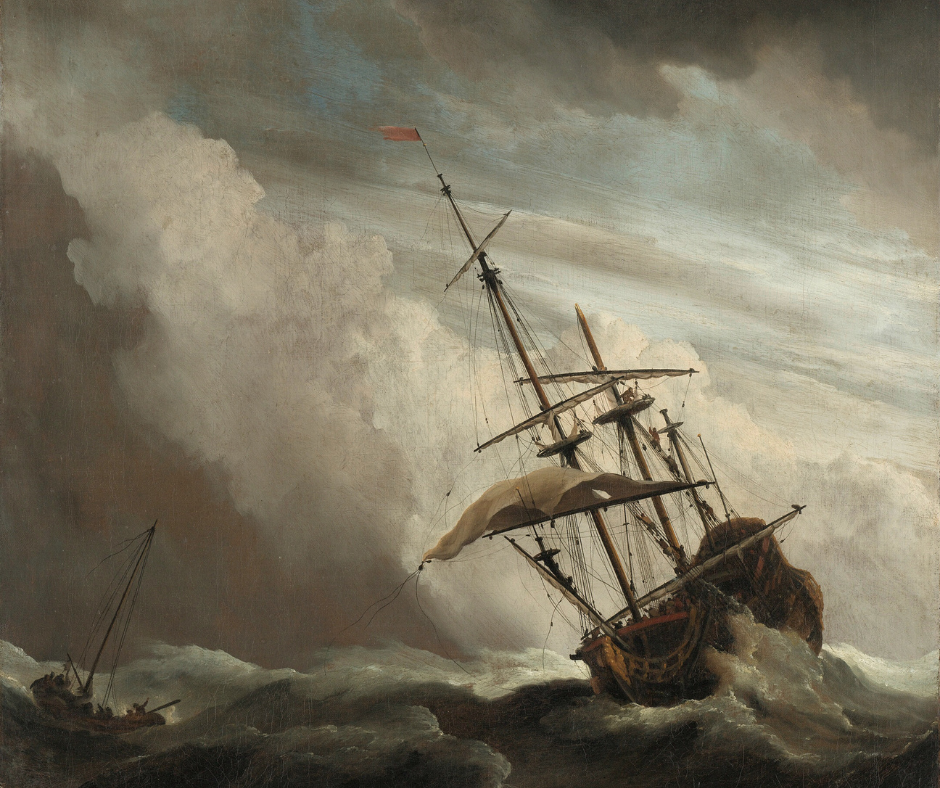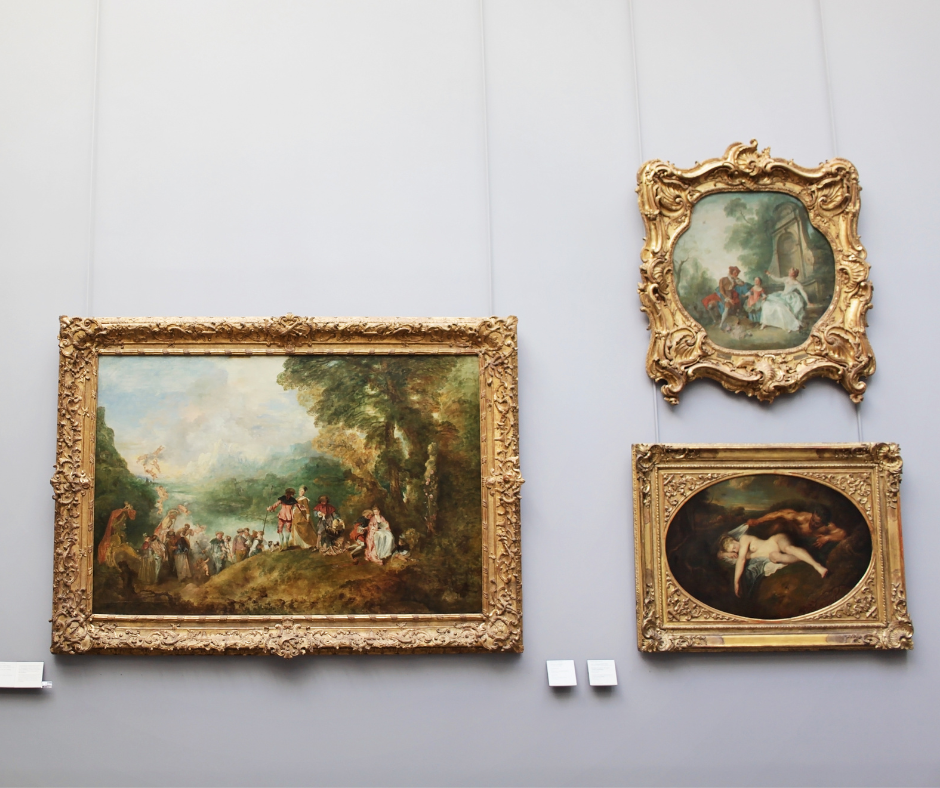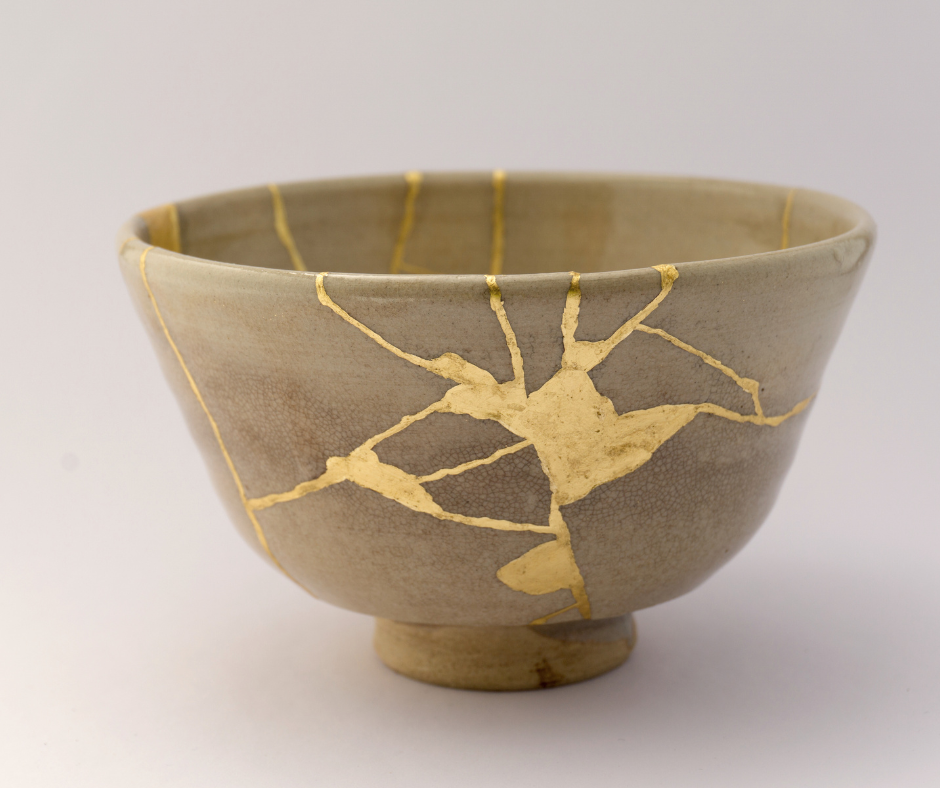

Your Guide to Getting Art & Antiques Through U.S. Customs
Summary
Reflection Questions
Journal Prompt
We all understand the allure of acquiring art and antiques from our international travels. However, there’s no denying the potential complexities that arise when it comes to getting them through customs. In this guide, we explore the intricacies of importing art to the USA—all while keeping your duty calculations in check. Let’s embark on this enlightening journey.
Understanding Art & Antiques in a Customs Context


Let’s delve into the regulations that govern these treasures on the move. When importing or exporting cultural and historical items, you must navigate a web of guidelines to ensure compliance with international and domestic laws. This is critical to ensuring a smooth customs process for your art and antiques.
These customs regulations are essential to understand when dealing with art and antiques:
- Art Authentication: If you’re dealing with artists’ proof etchings, engravings, woodcuts, lithographs, or prints, they must have an artist’s mark to prove their authenticity. In the absence of such a signature, other evidence must be provided to satisfy the port director.
- Exhibition Declarations: When entering works of art or other items that claim to be duty-free under Chapter 98, a declaration by a qualified officer of the institution is required to demonstrate entitlement to duty-free entry. Additionally, a customs bond is necessary to cover this entry.
- Transfer of Art: You can transfer articles entered under subheading 9812.00.20 to another institution without the need for a formal entry or withdrawal.
- Antiques: Antiques—when accompanied by a passenger’s declaration and entry, or entered informally—may be admitted free of duty if they are for personal use and meet the requisite age criteria. However, if they have been substantially repaired or changed, the duty may be assessed on the added portions.
- Furniture and Antiques: Furniture—as long as it’s an antique—can be entered for consumption at any U.S. port of entry within the customs territory. The definition of furniture in this context covers most articles claimed to be antiques.
- Entry and Prohibition: A claim for free entry of an antique article can be made on the entry or filed after entry but before liquidation—as long as the article hasn’t been released from customs custody.
- Endangered Species: Antique articles that would otherwise be prohibited entry under the Endangered Species Act of 1973 can be entered if they meet specific criteria—including age, lack of repair with endangered species parts, and filing the required declaration.
- Additional Duty: If an article claimed to be duty-free under the antiquity basis is later found to be unauthentic, an additional duty can be imposed. However, this can be avoided by withdrawing the claim before the examination of the article begins.
- Import for Sale: An additional duty may apply if the imported article, claimed as an antique, is intended for sale. This duty can be waived if evidence demonstrates that the article wasn’t imported for sale—particularly for items in a passenger’s baggage or those entered informally.
Preliminary Steps Before Purchase


Before you embark on the purchase of art or antiques from abroad, there are two critical preliminary steps to consider.
First, it’s essential to research country-specific export regulations. Each nation has its own set of rules and restrictions concerning the export of cultural and historical items. Understanding these regulations can help you avoid legal complications and ensure a smooth customs process.
Second, you must investigate the item’s history, including where it originated and its ownership trail. Authenticity and provenance are the backbone of any art or antique purchase. Documentation of provenance—such as bills of sale or exhibition history—can significantly enhance the credibility of your purchase.
Fuel your creative fire & be a part of a supportive community that values how you love to live.
subscribe to our newsletter
These two steps lay the foundation for a successful acquisition. Additionally, obtaining certificates, professional appraisals, or expert validations—when necessary—can further bolster the authenticity and value of your art or antiques.
This proactive approach minimizes potential hurdles during the customs process and safeguards your investment.
Import Permits & Documentation


importing art and antiques requires thorough documentation to navigate customs successfully. Here’s an overview of the key documents you may need—along with guidance on obtaining and filling them out correctly.
- Commercial Invoice: This document serves as proof of the transaction. It should include details like the seller’s and buyer’s information, a description of the item, its value, and the terms of the sale.
- Bill of Lading or Airway Bill: For items shipped by sea or air, these documents provide information about the shipment—including its origin, destination, and transportation details.
- Certificate of Authenticity: This is particularly important for art. It verifies the authenticity of the item and may be issued by the artist, an expert, or a reputable authority.
- Export License: Some countries may require an export license from the seller’s end. Ensure that the seller provides this if necessary.
- Import Declaration: In the U.S., this form is typically filed with U.S. Customs and Border Protection (CBP) to declare the imported goods. It should include details about the item, its value, and its origin.
- Harmonized System (HS) Code: Each item has a specific HS code that determines the duty rate. Make sure you correctly identify and declare the HS code for your art or antique.
- Customs Entry Forms: Depending on the nature of your import, you may need various customs forms, such as CBP Form 3461 or CBP Form 3461 ALT. These forms provide detailed information about the item, its origin, and its intended use.
- Certificates of Origin: Some countries may require a certificate of origin to confirm where the item was produced. These certificates can be obtained from chambers of commerce.
Special Considerations for Certain Categories
Importing religious artifacts might require additional documentation or approvals, especially if the items have religious significance. Consult with relevant authorities or religious institutions for guidance.
If you’re dealing with items considered national treasures, you may need special permits or permissions. These items may be subject to stricter export controls.
To ensure you have all the necessary documentation, work closely with the seller who should be experienced in international art and antique trade. It’s crucial to be meticulous in obtaining and correctly filling out these documents to facilitate a smooth customs process and avoid any legal or logistical issues.
Duties, Taxes, & Fees


When importing art to USA, it’s important to be aware of the potential costs involved. These expenses primarily include customs duties, import tax, and various fees. A customs duty is imposed by the government and depends on the Harmonized System (HS) code—which classifies the item, and its declared value.
Import taxes or value-added taxes (VAT) are additional charges that vary by country and are based on the total value of the item, including shipping and insurance costs. Fees and charges—such as customs brokerage fees and handling charges—can further add to the financial aspects of your import.
The age and origin of the item are key factors influencing these costs. Some countries offer preferential treatment or exemptions for items over a certain age—particularly if they are considered cultural artifacts.
To estimate these costs in advance, researching the correct Harmonized Tariff Schedule code—consulting customs authorities or customs brokers and considering potential age-related exemptions is essential.
Additionally, accurate appraisals and proper documentation help prevent overestimating the item’s value and—consequently—paying more in taxes. It’s also wise to budget for these expenses in advance and choose shipping methods and carriers carefully—as these decisions can impact the overall costs.
Being well-informed about the potential financial aspects of importing art and antiques ensures a smoother and more cost-effective process.
What’s the Difference Between Taxes, Tariffs, and Duties?
From a customs perspective, taxes, tariffs, and duties are all related to the financial charges imposed on goods as they move across borders or are consumed within a country. While they often overlap in common language, each has a specific definition and purpose:
Taxes
A tax is a levy imposed by the government. There are many forms of taxes, such as income tax (on earnings), sales tax (on goods/services consumed), property tax (on owned property), and others.
Within a customs context, the term “tax” might refer to specific kinds of domestic consumption taxes that are charged on imported goods. For instance, some countries might impose a Value Added Tax (VAT) or Goods and Services Tax (GST) on imports in addition to any customs duties.
Tariffs
A tariff is a tax on imports or exports between countries. Tariffs are used for various reasons including protecting domestic industries from foreign competition, to retaliate against perceived unfair trade practices, and to generate government revenue.
They can be “ad valorem” (based on the value of the goods) or “specific” (a set fee based on quantity or weight). Tariffs are directly associated with customs procedures.
When goods are imported, the tariff rate specified in a country’s tariff schedule is applied. This schedule lists rates for all possible imported items and might be influenced by trade agreements, international treaties, or other diplomatic negotiations.
Duties
In the context of customs, an import duty is a specific form of tariff or tax imposed on imported goods. Export duties are less common than import duties. Like export or import tariffs, duties serve to protect industries within the country imposing the duty. They also produce revenue for the government.
When people discuss “paying duties” on imported goods, they’re often referring to the customs duties applied at the border when the goods enter a country. The customs duty rate and the specific amount levied in import duties depends on the type, value, and origin of the goods.
Additionally, there are various kinds of duties based on their purpose—such as antidumping duties (to protect domestic industries from unfairly priced imports) and countervailing duties (to counter foreign subsidies on products that harm domestic industries). Some items receive a duty free treatment.
When are Art or Antiques Duty Free?
The duty-free status of art or antiques can vary significantly based on the country’s import regulations, trade agreements, and specific customs provisions.
Many countries offer a duty-free status for antiques that are over a certain age. For instance—in some jurisdictions—items that are more than 100 years old might be considered duty-free.
Cultural Significance
Some countries may waive duties for art or antiques that have significant cultural, historical, or national importance. This is especially the case if the item is being returned to its country of origin after being abroad.
Items that are being imported temporarily for exhibitions, museums, or art shows and are not intended for sale might be allowed duty-free entry or might be eligible for a temporary bond or customs relief programs. They would typically need to be re-exported within a certain timeframe.
Free Trade Agreements
Some trade agreements between countries can include provisions that reduce or eliminate duties on certain types of goods—including art or antiques. For example, free trade agreements significantly reduce duty rates to encourage trade.
Some countries also allow duty-free import of art or antiques if they are part of a personal collection, or if they’re being moved as part of an inheritance.
Exemptions and Special Designations
Some countries might allow returning residents to bring back art or antiques duty-free if they meet certain requirements—such as having lived abroad for a specific period or if the items were owned and used in another country for a certain length of time. Items designated as “fine art” by certain standards or recognized expert appraisals might be exempt from duties in some jurisdictions.
However, even you need not pay duty fees, your art or antiques may still be subject to other taxes, like a Value Added Tax (VAT) or a Goods and Services Tax (GST)—depending on the country of import. There might also be a merchandise processing fee. As such, it’s essential to note that customs regulations and tariff classifications can be complex, and interpretations can vary.
Asking a licensed customs broker for more information before importing antiques or art is recommended.
Other Considerations
Handling and Shipping Considerations
When dealing with art and antiques, handling and shipping considerations are paramount. It’s a bit like being a caretaker for these precious treasures.
Proper packaging, insurance coverage, and selecting the right shipping methods can make or break the safety of your valuable items during transit. Each piece is unique, and it’s essential to tailor the packaging to its specific needs. For delicate paintings, this might mean layers of protective cushioning and sturdy frames.
When it comes to antiques—especially those with intricate details—custom-made crates can be a lifesaver. It’s all about ensuring that your items are snug and secure in their packaging.
We recommend that you work with trusted international art shippers or courier services with experience in handling delicate and valuable pieces. Additionally, be prepared to address potential damages or losses during the shipping process, and have a plan in place to ensure the integrity of your acquisitions.
Potential Restrictions & Prohibited Items
Navigating potential restrictions and prohibited items is a critical aspect of importing art and antiques. Certain items—particularly those from specific countries or containing particular materials—may be subject to restrictions or even prohibited.
It’s essential to stay informed about international treaties and conventions that could impact imports—such as CITES (Convention on International Trade in Endangered Species of Wild Fauna and Flora) for wildlife and flora as well as UNESCO conventions for cultural heritage preservation. These regulations are in place to protect both cultural and natural treasures, so understanding and complying with them is crucial for a successful importation process.
Dealing with Confiscations or Delays
Facing confiscations or delays at customs can be a challenging situation, but understanding the following steps, rights, and responsibilities is crucial. Take the following steps to ensure favorable outcomes.
Contact Customs
If your items are held up at customs, reach out to the customs authorities or your customs broker for information and guidance. Understanding the reason for the delay is essential.
Provide Documentation
Be prepared to provide any requested documentation or additional information to resolve the issue. Accurate and complete documentation can often expedite the process.
Appeal or Review
In some cases, you may have the right to appeal or request a review of the customs decision. Understanding your options and the appeal process can be beneficial.
Legal Consultation
If the situation escalates, seeking legal counsel is advisable. Legal experts specializing in customs and import regulations can guide you through the process.
Rights and Responsibilities
As an importer, it’s essential to be aware of your rights and responsibilities. This includes accurately declaring the item’s value, origin, and purpose, as well as complying with all relevant laws and regulations.
Fines and Penalties
Failure to comply with customs regulations can lead to fines and penalties. Understanding the potential consequences is crucial—as customs violations can have legal implications.
Mitigation Strategies
Proactive measures—such as thorough research, proper documentation, and compliance with all regulations—can help prevent confiscations and delays in the first place.
Dealing with confiscations or delays at customs can be complex, but staying informed, communicating with customs officials, and taking the necessary legal steps can help resolve the situation and protect your interests as an importer.
Tips for Smooth Customs Clearance


A successful journey through customs clearance for art and antiques requires a proactive approach. Building relationships with customs brokers or specialists who understand the intricacies of art and antique imports can be invaluable.
Transparency and comprehensive documentation are your allies in ensuring a smooth process—as is enlisting the services of a professional appraiser or consultant to navigate the complexities of valuation and compliance.
By taking these steps, you can navigate customs with confidence and preserve the integrity of your valuable acquisitions—ensuring a seamless import experience.
By Armela E.








